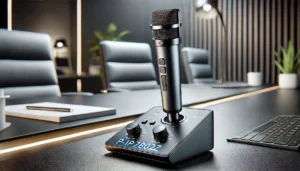How to Use freerdp /u:student /p:lab /v:192.168.50.152
If you’ve been wondering how to use freerdp /u:student /p:lab /v:192.168.50.152, you’re not alone.
Many people are looking for easy ways to remote into computers, whether it’s for work, school, or personal use.
Freerdp is a tool that can help with just that.
But what do all those commands mean?
Why would you even need to use them in the first place?
Let’s break it down in simple, everyday language.
We’ll talk about what Freerdp is, how it works, and give you real-life scenarios where this tool can save you time and effort.
What is Freerdp?
Freerdp is basically a way to connect remotely to another computer.
Think of it like being able to use a computer that’s miles away, as if it were right in front of you.
This is especially handy when you’re not physically near the machine but still need access to its programs or files.
For instance, freerdp /u:student /p:lab /v:192.168.50.152 allows a user named “student” to log into a remote machine using the password “lab.”
The IP address freerdp /u:student /p:lab /v:192.168.50.152 is the specific computer you’re trying to connect to.

Simple, right?
But why use Freerdp?
Well, maybe you’re a student trying to log into your university’s lab computers from home.
Or maybe you’re a tech person who needs access to a server without leaving your cozy desk.
Freerdp lets you do that with ease.
How Does freerdp /u:student /p:lab /v:192.168.50.152 Work?
Let’s walk through it:
- /u– This part is where you specify the username of the account you want to log into. In this case, it’s “student.”
- /p– This is where you provide the password for the account. The password is “lab.”
- freerdp /u:student /p:lab /v:192.168.50.152 – This is the IP address of the remote machine you’re connecting to.
When you run this command, Freerdp establishes a connection to that specific machine, allowing you to control it just as if you were sitting right in front of it.
Real-Life Example: Working from Home
Imagine this:
You’re a student with a lab assignment due, but the software you need is only available on your school’s computers.
You’re home, miles away from campus.
No need to panic.
You can use freerdp /u:student /p:lab /v:192.168.50.152 to log into one of the lab computers and finish your work.
This not only saves you the trouble of commuting but also lets you work at your own pace.
Freerdp can be a lifesaver for situations like this.
Why is Freerdp So Popular?
Freerdp is popular for several reasons:
- It’s free – Who doesn’t love free software?
- It’s open-source – This means anyone can tweak it to suit their needs.
- It works across platforms – Whether you’re on Windows, Mac, or Linux, Freerdp has your back.
So, whether you’re troubleshooting a server or accessing files from another location, Freerdp makes the process smooth and simple.
FAQ Section
1. Why would I use freerdp instead of other remote desktop tools?
Freerdp is lightweight and fast.
It’s open-source, meaning you can modify it if needed.
It also supports multiple platforms, so you’re not stuck using only one operating system.
2. Is my data safe when I use freerdp?
Freerdp supports encryption, so your data can be protected during the connection.
However, it’s important to follow best practices when using any remote desktop tool, such as using strong passwords and secure networks.
3. Can I use freerdp to connect to any machine?
As long as you have the correct username, password, and IP address, you can connect to any machine that supports remote desktop protocols.
4. Do I need to install anything special to use freerdp?
Yes, you need to install Freerdp on your device.
Most operating systems have simple installation guides available for this tool.

5. Can I use freerdp on a mobile device?
Yes, you can.
There are apps available that let you use Freerdp on mobile devices, though it’s more commonly used on desktops and laptops.
Troubleshooting Common Issues
It’s not all smooth sailing when using remote desktop tools.
Here are some common problems and quick fixes:
Connection Fails:
- Double-check the IP address (freerdp /u:student /p:lab /v:192.168.50.152) and make sure it’s correct.
- Ensure the remote computer is turned on and connected to the network.
- Make sure there are no firewall issues blocking your connection.
Incorrect Password:
- If you receive a password error, confirm that you’re entering the correct password (in this case, “lab”).
Mistakes happen, especially with passwords.
Laggy Connection:
- This could be a result of poor network performance.
Check your internet speed, and if possible, switch to a wired connection for a more stable experience.
The Bottom Line
Freerdp is a flexible and powerful tool.
Whether you’re connecting to a machine for work, school, or just personal use, freerdp /u:student /p:lab /v:192.168.50.152 can get the job done.
It’s free, easy to set up, and works across platforms, making it a top choice for many users.
By understanding what each part of the command means and how it works, you can take full advantage of Freerdp’s capabilities.
So next time you need to remotely access a computer, remember: freerdp /u:student /p:lab /v:192.168.50.152 is your go-to solution!
In fact, it might just become your new favorite way to work remotely.














Post Comment